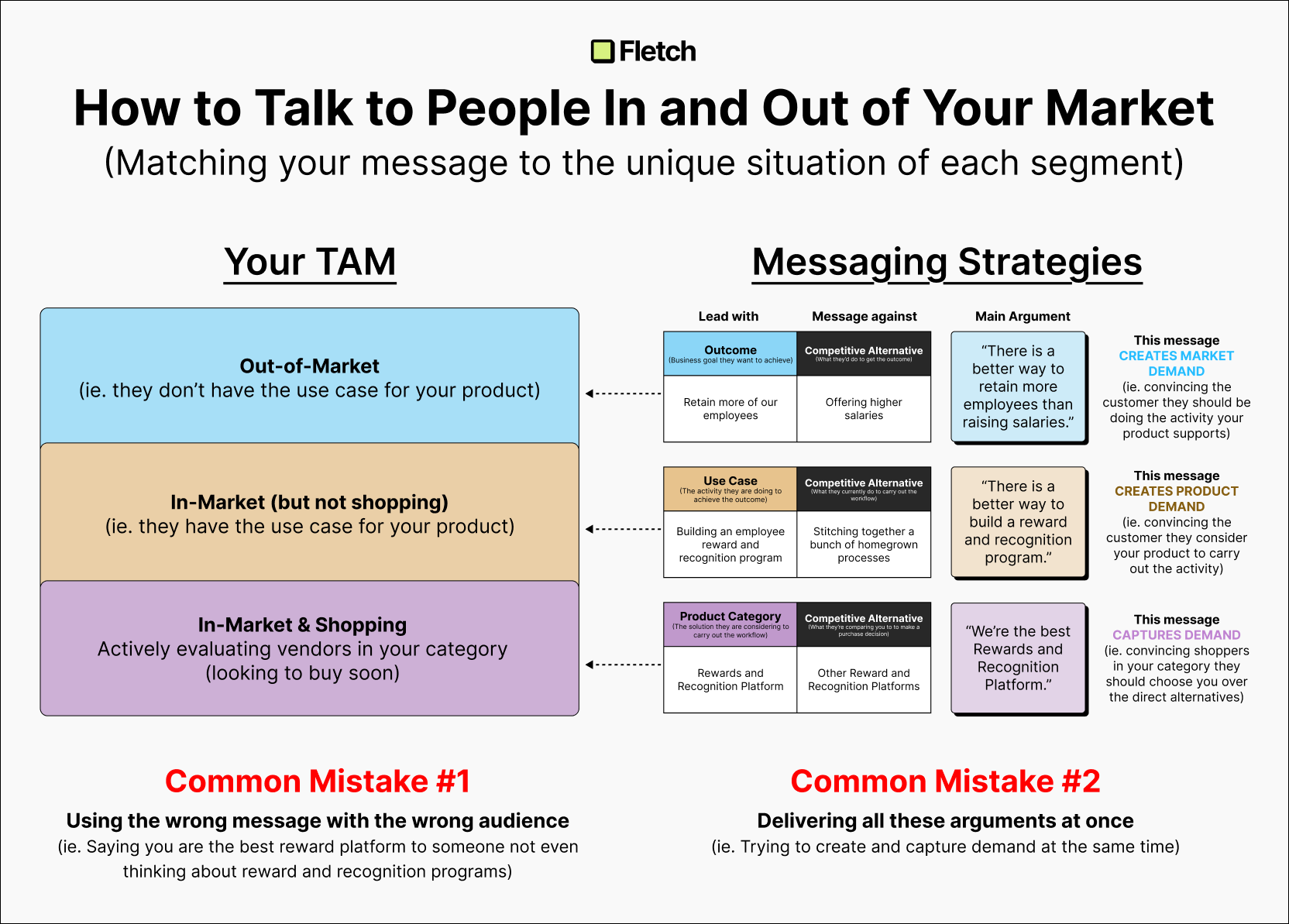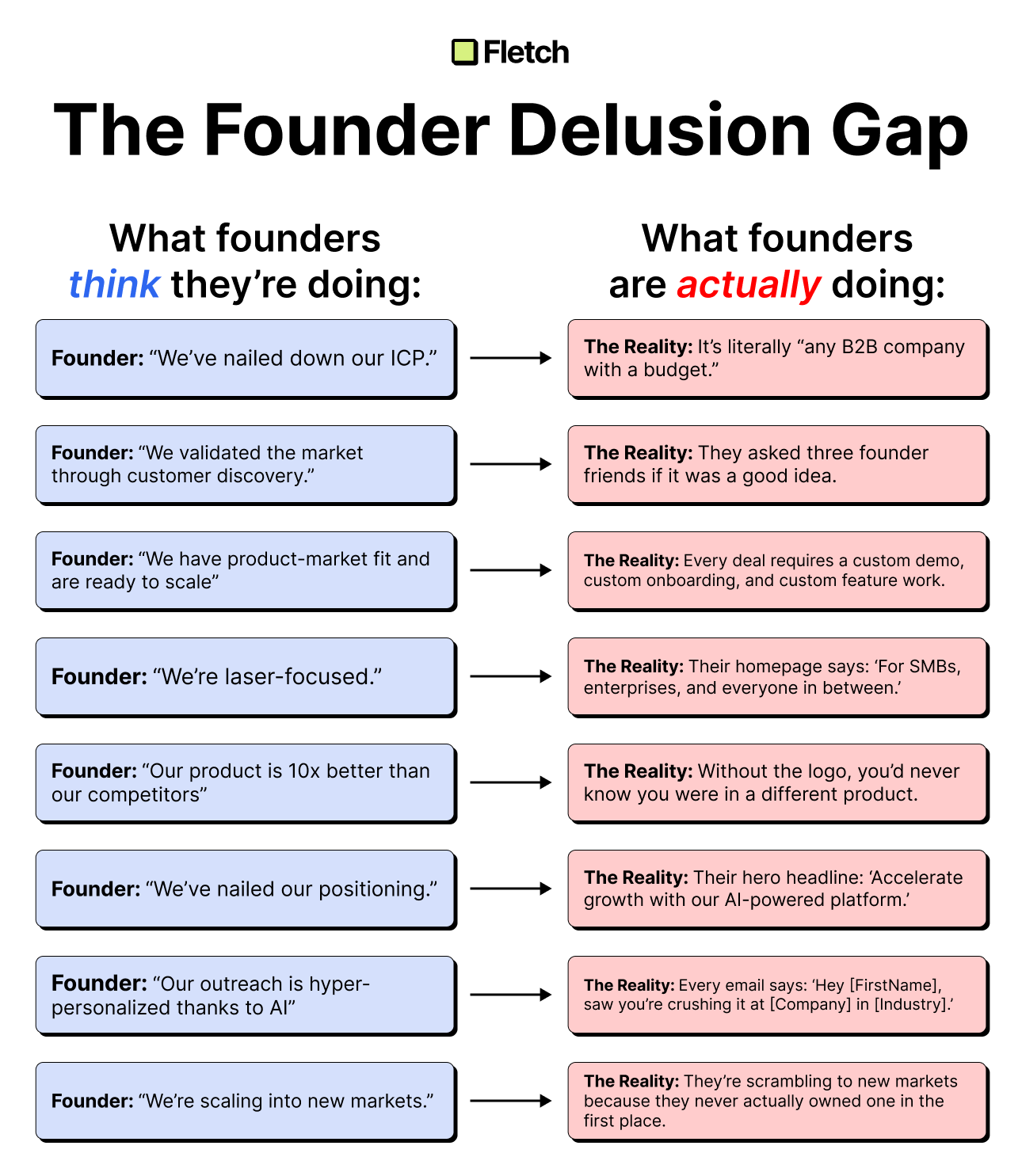How to use Minimum Viable Positioning


ATTN: Early stage founders!
in the same way you need a minimum viable PRODUCT,
you also need minimum viable POSITIONING.
Robert Kaminski 🎯 and I work with lots of horizontal startups.
What’s the very last thing they want to do?
↳ niche down ❌
Their entire product strategy is based on unlocking as many use cases for as many segments as possible.
But this creates a problem…
→ how do you talk to all these different customer segments at once? 🤔
→ how you explain your product when it’s being used in so many different ways? 🤔
→ how do you effectively “position” your product in the minds of such a diverse set of customers? 🤔
Lots of founders will try to fill out a positioning canvas (or mad-lib) that asks questions like…
“What problem do you solve?”
“Who is your target customer?”
“What value do you bring?”
And this will drive them CRAZY!
“We solve MULTIPLE PROBLEMS!!” 😠
“We have MULTIPLE TARGETS!!” 😡
“The value we bring is different for EVERYONE!!”😤
If this is you, I have some good news… and some bad news.
Bad news first…
❌ you actually DO need to figure out how to position your product…
or no one will ever spread the word.
❌ if you can’t claim a spot in your prospects’ brains,
they’ll never think to use you.
Now the good news…
✅ You actually DON’T need to fill out all those different categories…
✅ You just need ONE element for the market and ONE element from the product.
✅ Like a minimum viable product, this message is your minimum viable positioning.
In order to have ANY level of success getting off the ground, you need to say AT LEAST ONE THING about the market (in general) and AT LEAST ONE THING about the thing you’ve built.
When you think about it, this should be incredibly obvious…
→ it’s literally in the name of the goal (“product-market fit”) 🤦🏻♂️
→ it’s literally in the name of the discipline (“product marketer”) 🤦🏻♂️
If you can get MORE than one element from each row, more power to you!
DuckDuckGo manages to get three elements in their hero
(and you could argue they also communicate the product category of “search engine” through the well-known UI.)
When you try to figure out your MVP...
here are three ways founders get this WRONG ❌
1️⃣ only choosing elements from the top row (the market)
↳ this may create a compelling starting point, but without mention of your product, no one will even know you’re a company 🤷🏻♂️
2️⃣ only choosing elements from the bottom row (the product)
↳ if you JUST talk about the product, you’ll come across as a nifty invention — but no one will quite understand when to use you 🤷🏻♂️
3️⃣ choosing NO elements
↳ for awhile, Airtable’s hero message was “connect everything, achieve anything” (good luck having THAT stick in people’s minds) 🤷🏻♂️

Ben Wilentz
Founder, Stealth Startup





